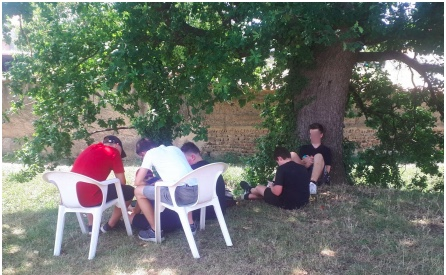Summer camps are places and moments of togetherness for young people who enjoy a vacation far from their daily environment. In recent years, the massive arrival of cell phones has raised questions among animation professionals. "How to preserve the specificities of these vacations when young people have the possibility to contact friends and parents throughout their stay? How to create and maintain a collective spirit within the summer camp while letting young people use their smartphones? How to negotiate the supervision of cell phone use by young people?"
The study conducted by Émilie Morand, a researcher associated with CERLIS, University of Paris, and the National Institute for Youth and Popular Education (INJEP), highlights the complementarity of digital and face-to-face links for communication between young people, but also between them and the activity teams. It also shows the tensions caused by the presence of the smartphone and the supervision of its use by the animation teams.
"For the mobile phone can be a medium for the worst as well as the best: situations of harassment and other types of violence on social networks are, for example, made more difficult to detect by the animation teams. Nevertheless, the links created on social networks allow young people from different social backgrounds to broaden their world by making visible other cultural and leisure practices, and other interests than their own. Often mistakenly thought of as a factor of isolation, the use of cell phones by young people can, on the contrary, encourage collective practices and consolidate the group.Référence :





